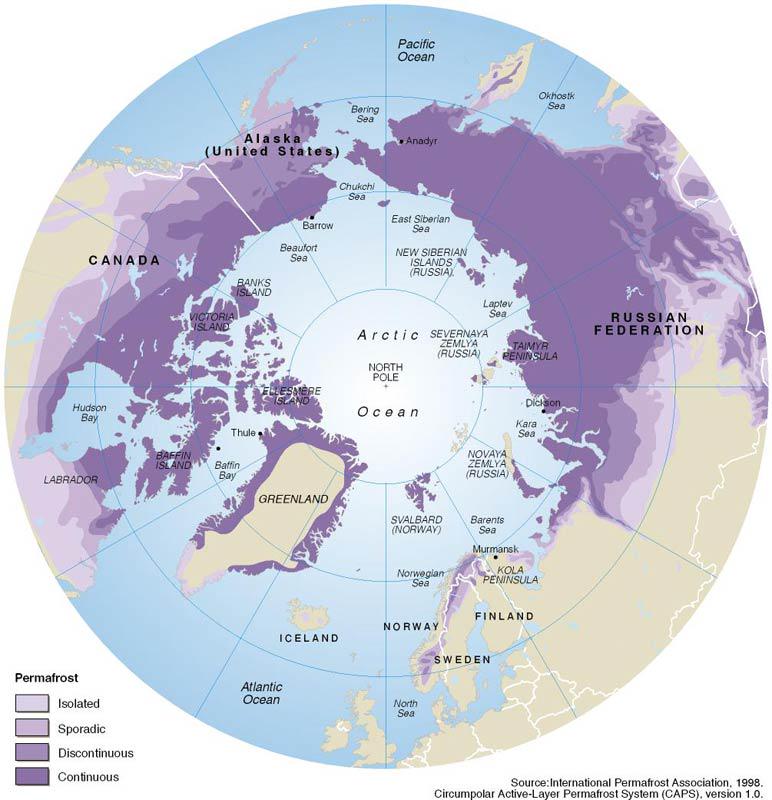Permafrost Melting and Global Warming Map


David Chen
Data Visualization Specialist
David Chen is an expert in transforming complex geographic datasets into compelling visual narratives. He combines his background in computer science ...
Geographic Analysis
What This Map Shows
This visualization, titled "Permafrost: A Global Warming Loop Map," illustrates the regions of the world where permafrost is present and highlights the alarming rate at which it is melting due to rising global temperatures. Permafrost, which is defined as ground that remains frozen for at least two consecutive years, is predominantly found in Arctic regions, but it also extends into sub-Arctic areas. The map vividly showcases areas at risk and those already experiencing thawing, giving us a crucial insight into one of the lesser-discussed aspects of climate change.
Deep Dive into Permafrost and Its Role in Climate Change
Permafrost is more than just frozen soil; it is a complex layer of earth that contains organic matter, including vast amounts of carbon and methane. Interestingly, estimates suggest that the permafrost in the Arctic holds nearly twice the amount of carbon currently present in the atmosphere. As global temperatures rise, this permafrost begins to thaw, releasing greenhouse gases that further contribute to global warming. Have you ever wondered why the Arctic is warming at twice the rate of the rest of the planet? This phenomenon is partly due to the albedo effect, where melting ice and snow expose darker surfaces that absorb more heat.
The recent Intergovernmental Panel on Climate Change (IPCC) reports indicate that permafrost is already beginning to thaw at unprecedented rates. As of 2021, it was reported that about 1.5% of permafrost in the Arctic had already melted away. This melting accelerates the release of carbon dioxide and methane, potent greenhouse gases that trap heat in the atmosphere. The feedback loop is alarming: warming leads to thawing, which leads to more greenhouse gas emissions, which in turn leads to further warming. This cycle creates a ripple effect that exacerbates the already critical situation of climate change.
What's fascinating is how this issue not only affects the Arctic but also has far-reaching implications for global climate patterns. For instance, the thawing permafrost disrupts local ecosystems, alters hydrological cycles, and even damages infrastructure in Arctic communities. Additionally, melting permafrost can lead to increased coastal erosion and changes in water quality, impacting both wildlife and human populations.
Regional Analysis
When examining the map, we can identify several key regions impacted by permafrost thawing, notably in Siberia, Alaska, Canada, and parts of Greenland. Each area exhibits unique characteristics and challenges. For example, Siberia, which contains over half of the world's permafrost, is experiencing some of the most rapid changes. Reports indicate that in certain areas, temperatures have risen by up to 3 degrees Celsius over the past 30 years, leading to extensive thawing and the formation of thermokarst—landforms that occur when permafrost melts and causes the ground to collapse.
In Alaska, Indigenous communities are sounding the alarm, as warming temperatures threaten traditional lifestyles and food sources. The loss of permafrost has led to increased flooding, infrastructure damage, and a decline in wildlife populations, which are crucial for subsistence hunting and fishing. In Canada, the situation is similarly dire, with Inuit communities witnessing changes in animal migration patterns, posing additional challenges to their way of life.
Interestingly, Greenland presents a different picture. While it has vast expanses of permafrost, the melting ice sheets here are even more prominently discussed due to their immediate impact on global sea levels. However, the thawing permafrost in Greenland also contributes to the release of greenhouse gases, which plays a role in the larger climate change narrative.
Significance and Impact
The melting of permafrost is not just an environmental issue; it is a pressing global concern that requires immediate attention. The feedback loop created by permafrost thawing highlights the interconnectedness of climate systems. As global temperatures continue to rise, the implications for weather patterns, sea levels, and biodiversity are profound. For instance, the release of methane—a gas that is over 25 times more effective at trapping heat than carbon dioxide—could significantly accelerate the pace of climate change, leading to more severe weather events, food shortages, and displacement of communities.
Current trends suggest that if we do not take substantial action to curb greenhouse gas emissions, we may reach a tipping point where permafrost melting becomes irreversible. It is imperative that the global community pays attention to this critical issue, as Arctic communities have been pleading for recognition and action. The urgency of addressing permafrost thaw cannot be overstated, as it stands as a stark reminder of the rapidly changing climate and its potential to impact us all, regardless of where we live.
As we move forward, understanding permafrost and its role in climate change is vital. Public awareness, scientific research, and policy interventions are necessary to mitigate the effects and protect our planet's future. Will we heed the call to address this pressing issue, or will we allow it to slip further into the shadows of climate discussions? The choice is ours to make.
Visualization Details
- Published
- October 29, 2025
- Views
- 10
Comments
Loading comments...